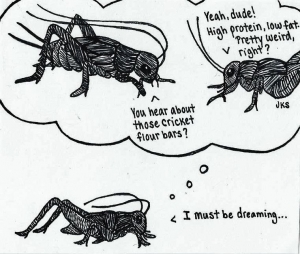 Julie Smitka, junior in physics and philosophy (Courtesy of Technician Online)
Julie Smitka, junior in physics and philosophy (Courtesy of Technician Online)
Tyler Gobin, Staff Columnist
The average male’s dorm room or apartment has at least two different brands of supplemented protein powder. It serves as a meal supplement for students on the go and post-workout shakes to maximize the anabolic window. Protein is an irreplaceable part of growing muscles and vital for any college student trying to maximize his or her training. But protein powder regiments can become monotonous, and some flavors can be downright disgusting. Why not boost your supplements with an extremely nutritional and overlooked source of protein—insects?
An estimated two billion people in developing countries worldwide already depend on more than 1,900 different species of insects for food according to the United Nations’ Food and Agriculture Organization. Insect cuisine has long been an important part of diets around the world. Recipes incorporating bugs into snacks, main courses and even desserts exist in many cultures. Unfortunately, insect cuisine is only a niche market in the United States despite its nutritious and sustainable advantages.